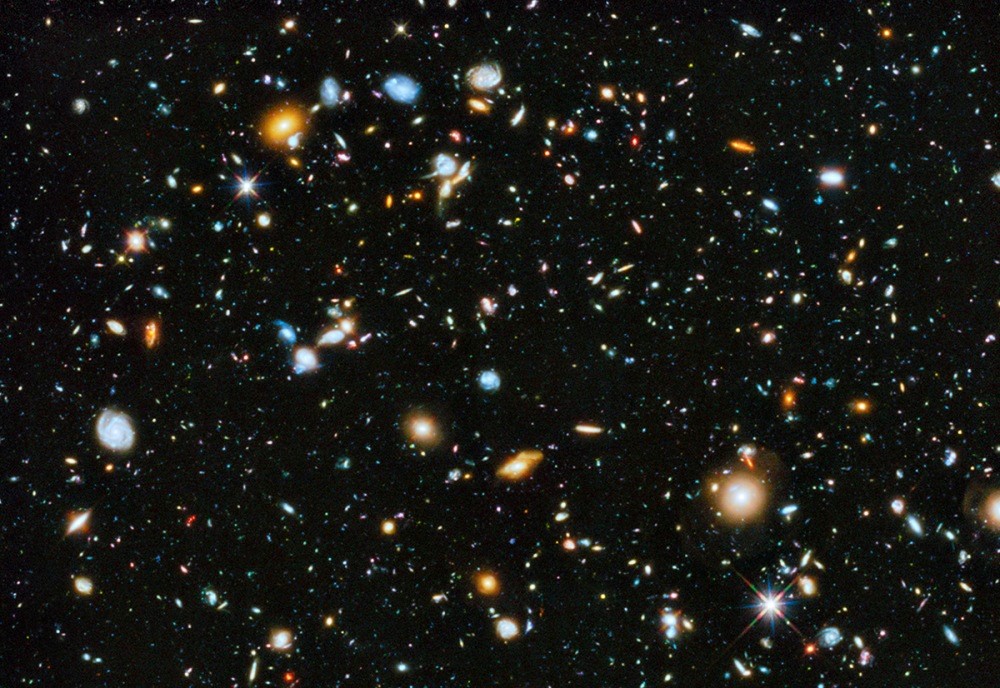
Notes of a lecture on starlight and time. Do they present an insurmountable problem for biblical creationists? The lecture was given August 1st, 2015. See Age and Reason Seminar Adelaide for details.
Here is the problem. The universe is truly vast in size, in fact, tens of billions of light-years in size. One light-year is about 10 trillion kms. It is the distance light travels in one year. By taking a literal history from Genesis chapters 5 and 11 you can calculate that the universe is only about 6000 years old. If so, how does starlight get to earth from a distance greater than 6000 light-years? Shouldn’t we only be able to see to a distance of 6000 light-years in the universe?
Is this a brick wall? Does it mean the bible must be wrong? Distances are billions of light-years. Surely that must mean light took billions of years to travel here from the distant cosmos? How do you explain that?
Ok, lets first look at some simple maths.
Distance = Speed x Time
So if you drive your car a distance of 100 kms and travel at 50 km/hr it will take you 2 hours. 10 billion light-years represents a distance in the Universe to some of the most distant galaxies like those pictured here in what is called the Hubble Ultra-Deep Field 2014.
This is an image taken with the Hubble Space Telescope. The galaxies are between 5 and 10 billion light-years away. Light travelling at 1 light-year/year over that distance should take 10 billion years to get to earth. Shouldn’t it?
Let’s not argue over the distances in the cosmos. They are truly vast and even if the assumed distances were in error such that they were really 100 times less it would not solve the problem. Secondly there is the speed of light. Has it changed over time? If so, that could be a place to look for an answer. But it is a speed limit in the known Universe. And finally, there is the time it takes light from the distant cosmos to travel to earth, which is related to how we actually measure that time. We might also ask in reference to the biblical statements on the age of the Universe, by which clocks is that age measured? But biblical creationists are not the only ones with a light travel time problem.
Horizon problem

The naturalists have a 13.8 billion year old universe which has a light travel time problem also. Why is the Cosmic Microwave Background (CMB) radiation so uniform? Why is it all at the same temperature? The argument goes like this. The CMB ‘light’ we now see on earth in our telescopes allegedly separated from the big bang fireball about 380,000 years after the big bang. It is as if we are looking back in time to that moment. At that time the radiation was a lot hotter than now and if the different regions, which now appear to be on opposite sides of the universe, had started with even slightly different temperatures, then there would simply be no way the temperatures could have evened out to a common temperature now. This is a light travel time problem. The CMB ‘light’ we see now is at an extremely uniform 2.725 degrees K. But how could it become so extremely uniform? The ‘light’ we see from opposite sides of the universe has not had time to mix up—to come to the same temperature, in the alleged past 13.8 billion years since the alleged big bang. Big bang believers say there is no problem here because the universe rapidly inflated soon after the big bang.
Cosmic inflation allegedly started 10−36 seconds after the Big Bang and then stopped between 10−33 and 10−32 seconds later. The Universe expanded 1078 times in volume. How and why it started and smoothly stopped are unknowns.
To believe this requires a lot of faith. It is a philosophical idea designed to solve not only the horizon problem, but also the smoothness problem, the flatness problem, the isotropy problem and the monopole problem. An ‘unknown’ to explain the unknown.
However, really, it is the ultimate ‘fudge factor.’ It has been heavily criticized by evolutionist themselves because the invoked mechanism does not correspond to any known physics but seems to be an ad hoc contrivance to accommodate almost any data obtainable. For more on that search “cosmic inflation” on creation.com.
Biblical creation light travel-time problem
For the creationist light travel-time problem I list 5 possible solution categories, which I have ranked in order, counting down from number 5 “Not favoured by me” to number 1 “Strongly favoured by me”.
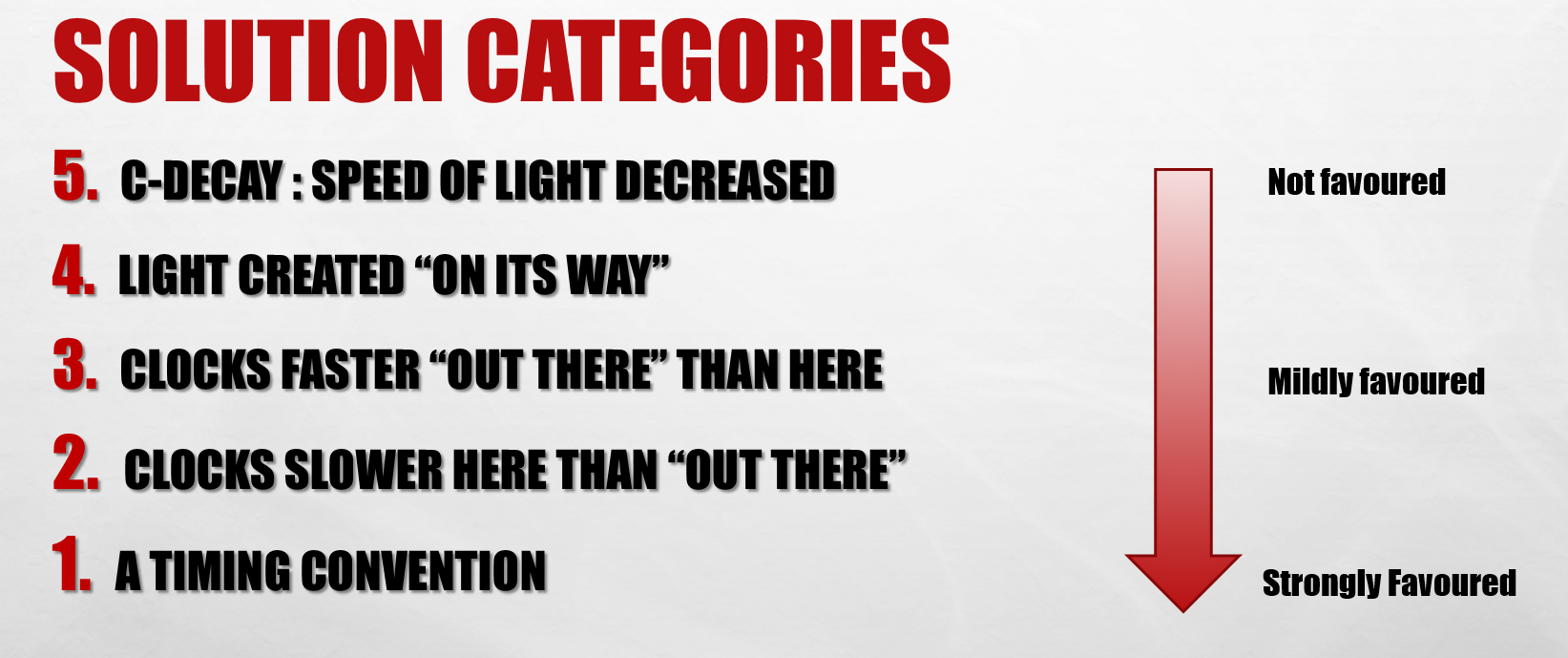
Now let’s look at each of these in turn.
- c-decay: speed of light decreased
c-decay was made famous both in and out of creationist circles in the 1980s, by Mr Setterfield, who I first met in 1980, here in Adelaide. He told me that God spoke to him and revealed to him that the speed of light was extraordinarily much faster at Creation 6000 years ago and since then has slowed down. If true that would solve the light travel time problem, because it was so fast that light could travel the vast distances within 6000 years.


These plots of the speed of light verses time are taken from the Norman and Setterfield (1987) analysis.1 They show their compilation of the historically measured values for c, the speed of light. The plot on the right is a zoomed in plot where the data show in about 1960 the speed of light apparently became constant. In modern measurements both precision and accuracy has improved. Any determination of a decrease strongly depends on the first few historical measurements (Römer 1676, moons of Jupiter; Bradley 1740). Their error bars were very large and subsequent measurements tended to be biased towards them. Hence the gradual decline to the modern value.2 Then in 1983 there was a change in the meaning of the term ‘speed of light’ as used in the SI system of units. It was defined with an exact value (299,792,458 m/s). Now it cannot change.

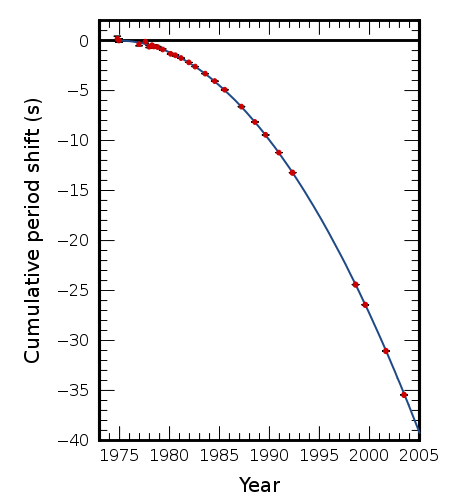
But if the speed of light was faster in the past then we should see evidence of that in the cosmos. Note first, the speed of light is not to be understood just as the speed with which photons travel through space, but it affects all physics. It is a universal constant. For example, pictured here is the pair of neutron stars, called the Hulse-Taylor binary pulsar. This system won Hulse and Taylor the Nobel Prize in 1993, because they observed the spin down where the two neutron stars spiral closer and closer to each other. One is a pulsar, which sends out a radio beacon signal. This system, according to Einstein’s General Relativity Theory, should lose energy in the form of gravitational waves and these guys modelled that and measured the change in their orbital distance. The theory curve (solid line) fitted the observations exquisitely over nearly 40 years. But the current measured value of the speed of light was used in that theoretical prediction. The binary pulsar is 21,000 light-years away, so, if the speed of light was greater in the past, when the light left the pulsar, it would affect the physics, but it has not. Hence we can conclude the speed of light has not changed.
Light created “on its way”
Light created “on its way” also called “light created in transit.” It means God created all the beams of light from all the stars and galaxies in the Universe so that there was no need to wait for it to arrive at the Earth. This seems to be a simple solution to the problem but this has a major problem.
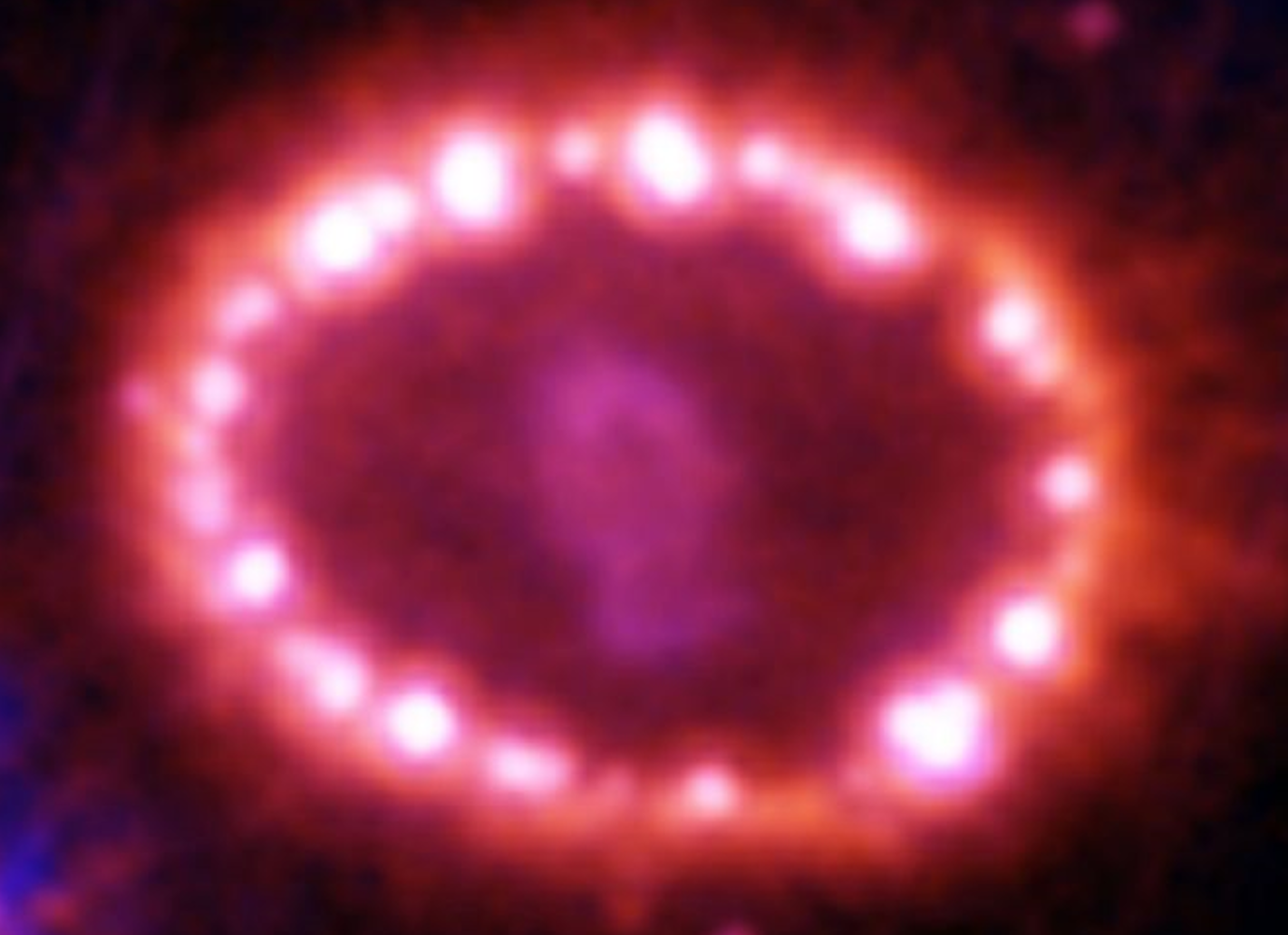
Light carries information: the images we see in the cosmos are of real events. For example, this image here of a supernova that was first seen in 1987 in the Large Magellanic Cloud, a small galaxy next to our own. The distance to the explosion is about 170,000 light-years, which means if God created the beam of light coming from that explosion it must contain nearly 170,000-years worth of false information. Only after 170,000 years when the real signal arrives can we see what it actually looks like. (This should be true then of all images in the Universe.) But God is not a deceiver, so this explanation is unlikely. However, some have suggested models incorporating this sort of thing.
To get around this problem it has been suggested that God used wormholes connecting distant points in space so the travel time is very short compared to travelling through normal space. Sounds more like science fiction!
In Faulkner’s model,3 he describes God creating a mature universe. Faulkner says God could have miraculously translate light such that we can’t see anything unexpected, which means it needs a perpetual miracle to sustain it. But a perpetual miracle through all space and time is really a law of nature. For there to be no false history light must carry real historical information though.
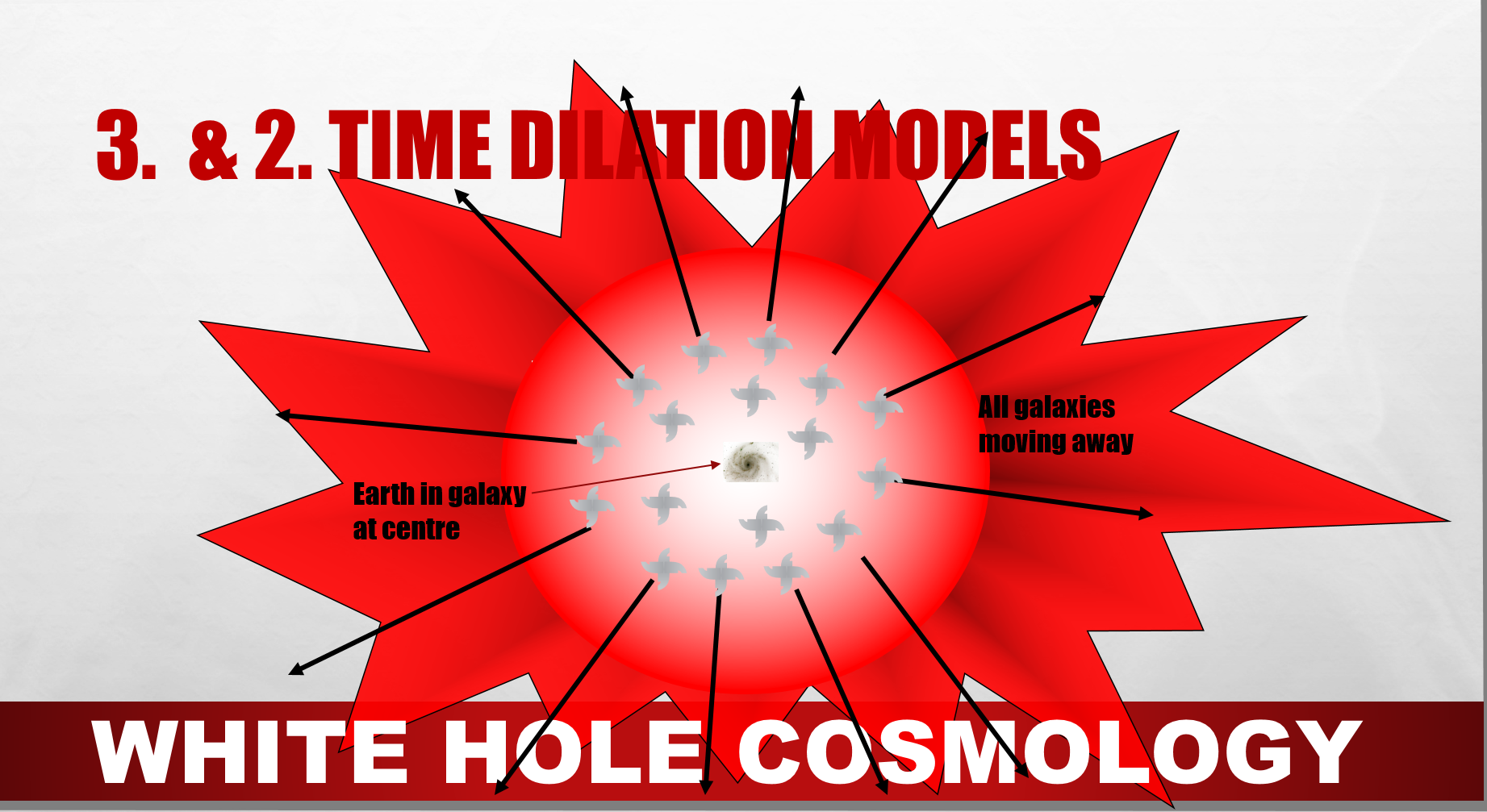
These next two categories (numbers 3 and 2) relate to clocks and time dilation models. You may know something of relativistic time dilation, which means the rate at which time passes for one observer on Earth with respect to another in the cosmos depends on several factors, including their relative speed and the gravitational field they experience. These are called relativistic effects, which are real experimental physics. Russ Humphreys was the first to propose that the whole Universe is a finite-sized white hole, sort of the opposite to a black hole, with the earth near the centre, and all galaxies moving away from it.
Clocks Faster “out there” than here
In this category, number 3, I look at models where rates of clocks in the cosmos were much faster than Earth clocks during the Creation process.
In Burgess’ model,4 he describes a process something like fast-forwarding your video player. But if God accelerated processes in the cosmos, at the same time as stretching out the Universe as Faulkner and Burgess suggest, it should leave evidence. We should see blueshifts in starlight coming from all the galaxies, but everywhere we look we see redshifts only. That says these 2 models are ruled out.
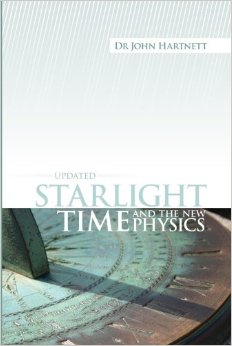
My second cosmology described in my 2007 book Starlight Time & the New Physics falls into this category. It is based on the cosmology of the late Professor Moshe Carmeli. That is where the new physics comes in. I used that to speculate on how God created the Universe. It doesn’t have a blueshift problem because it involves a new dimension. It does not require fudge factors like dark matter, dark energy or inflation but it has a new dimension, the expansion velocity of the universe. What that exactly is I don’t really understand. The cosmology still has several unsolved problems. Unfortunately no general 5 dimensional cosmology exists. Carmeli never found such a theory. To date I have not found the required space-time-velocity theory, with an extra time-like dimension, that fits the Creation period, though I am continuing to search.

This graphic illustrates the principle in my model of how a large amount of the time passes in the cosmos while only a day passes on Earth. During Day 4 of Creation week when God created the stars and galaxies in the cosmos the process of rapid expansion of the universe caused cosmic clocks to ‘tick’ about 10 trillion times faster than Earth clocks. So even though it would take light 170,000 years to travel from the supernova in the Large Magellanic Cloud to Earth or 2.5 million years for the light from the Andromeda galaxy to get here, those are travel times as measured by cosmic clocks. On Day 4 of Creation week the light from everywhere in the universe arrived within 24 hours as measured by Earth clocks. This is a relativistic effect on time.
Here is a simple animation to show this.
During the Creation Day 4, the universe is rapidly expanded, galaxies move away from our galaxy at the centre, and cosmic clocks tick very fast compared to Earth clocks. Then at the end of Day 4, the Creator stops the acceleration of the expansion and then all clocks ‘tick’ at the same rate. But during the Creation process there is billions of years, in cosmic time, available for light to travel to Earth, while only 24 hours passes on Earth.
Clocks slower here than “out there”
In this category, number 2 I look at models where, during the Creation process, Earth clocks ticked very slowly compared to cosmic clocks. That means that time passed more slowly on Earth than in the cosmos. But light beams had an enormous amount of time to travel from distant sources where clocks ‘tick’ at the same normal rate as they do today on Earth.

Russ Humphreys’ first cosmology as described in his 1994 book Starlight and Time falls into this category. It relies on an expanding universe of finite size, with the Earth at the centre of a deepening gravitational potential well. It predicted blueshifts in light from galaxies but we only see redshifts. In 1998 Humphreys found timeless zones also existed in the model, which helped, but in 2003 I realized it had another problem. The time dilation effect depends on the shape of the bottom of the gravitational potential well, which in this model was quite shallow, which meant for light coming from galaxies nearby little time dilation would occur. That means the model is ruled out.
My first model (2003)5 employed no gravitational potential well, but a supernatural causation only. During Creation week, God miraculously slowed Earth and the solar system clocks in comparison to cosmic clocks. The model doesn’t need an expanding universe, but it is rather ad hoc. That is, it invokes a miracle.

In 2008 Humphreys published his second model,6 still a finite, expanding universe, with Earth near the centre. Note the ‘waters above’ as described in the Genesis 1 creation are all outside the universe, i.e. all galaxies are inside a giant shell of water. This creates a gravitational potential well for the galaxies more like a trampoline with a heavy metal laying on it. As the universe expands the uniform potential in the centre increases. This is illustrated by the trampoline material being stretched out. In this model that potential was near a critical condition below which clocks would stop, i.e. time would stop at the centre but billions of years could pass on galaxies in the outer edges of the cosmos.

But now Humphreys is working on his third cosmology, which is based not on an expanding universe but a static one. In his original book he used the idea of the expanding universe, borrowed from standard big bang cosmology, which is illustrated by this balloon analogy. The universe is like the surface of the balloon as shown here with galaxies attached to its surface, like buttons glued on. As the balloon is blown up the galaxies all move away from each other. This is used to describe a universe with no centre and no edge. Humphreys and I have used the same idea but in a finite bounded universe, with a centre and an edge. The stretchy material of the balloon corresponds to expanding space.

And we used certain scriptures to justify expanding space, the stretching of the heavens during Creation week. Some Christian apologists also use these scriptures as a justification to say that the Bible describes a big bang creation with an expanding universe. But if the universe is not expanding there is no big bang origin. So, do the Scriptures really describe cosmological expansion of space?
Here a list of the common scriptures that often include the words “stretched out” or “spread out.” If you look into the range of meanings of the Hebrew words used, the terminology is more of putting up a tent or a canopy or curtains.
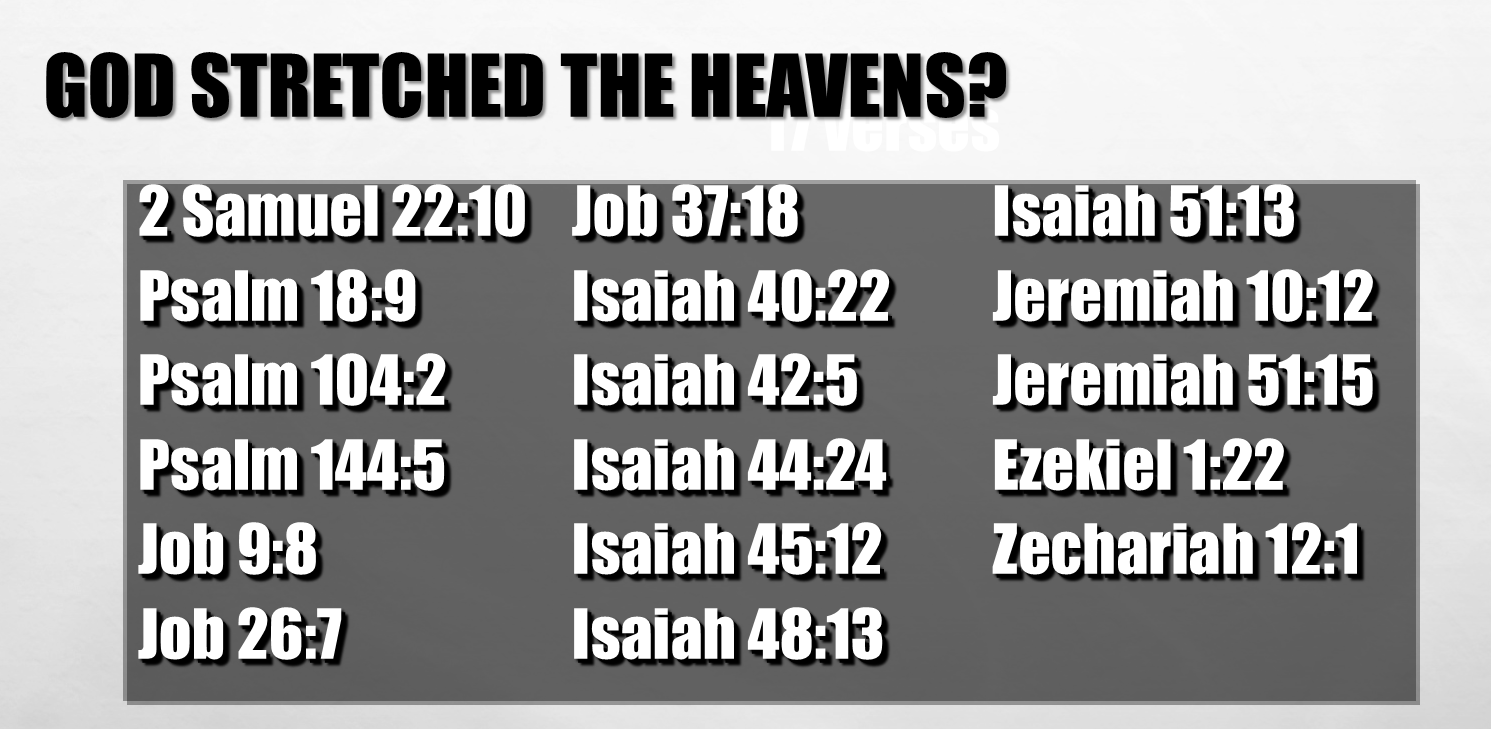
The Hebrews were familiar with tents, and that material does not stretch very much. It certainly does not stretch like the balloon analogy of big bang cosmology. Russ Humphreys wrote to me, sharing what he had written on the Creation Research Society discussion board, where he wrote:
Humphreys wrote:7 (my emphasis added)
When John Hartnett first raised the point … to me in early 2011, I realized he was absolutely right. Scriptures like Isaiah 40:22(b),
“Who stretches out the heavens like a curtain And spreads them out like a tent to dwell in”,
aren’t comparing the heavens (the space in which the stars exist) to something as elastic as a rubber sheet, which can extend its length and width considerably when we apply tension to it. Rather, God compares the heavens to a fabric, like a curtain or tent material. When we apply tension to ordinary fabrics, such as those available in Bible times, they only increase their dimensions by a few percent. That is not nearly large enough to give the sevenfold or more increase in size that we would need to explain the redshifts we observe. That sent me back to the drawing board on my second cosmology.
I realized pretty soon that a simple increase of tension in the fabric of space, even without much extension of its size, could give us large redshifts.
Humphreys is now developing a model based on the tension in the fabric of space—that is extremely dense and does not stretch much. It is a static universe, but he is looking at relativistic time dilation resulting from the tension of the fabric of space, which is analogous to the tension in the trampoline mat as compared to it stretching.
A timing convention
Category number 1. This idea was first suggested in 2001 by Jason Lisle,8 though he published under a pseudonym, Robert Newton, as at the time he was doing his PhD at a university in the US. In order to resolve the equations of special relativity Einstein made a choice of a clock synchronisation convention (called Einstein Synchrony Convention or ESC), which is used in nearly all relativity theory. Lisle chose a different timing convention, the Anisotropic Synchrony Convention (or ASC). Under that convention events occur when we see them happen. Under the Einstein convention light travels at constant speed and takes billions of years to get here but under ASC the light arrives instantly. I emphasize this is only a choice of convention.

Now, two clocks are synchronised under ESC by assuming the speed of light is a finite constant and the same in all directions. When we measure the speed of light using a clock this convention means we always measure the 2-way speed of light.
This is done by using a single clock and reflecting a light beam off a mirror. How about adding another clock and measuring the 1-way speed?

How would you send back to the originating clock the time when the light signal arrived at the receiver clock to calculate the travel time? You need to send back another light signal and that then makes it a 2-way measurement.

For this reason, the 1-way speed of light has never been measured. In fact physics tells us it is impossible to do so. So we are free to choose it. Therefore under the ASC light from the distant cosmos arrives instantly, even though under the ESC it takes billions of years. I’ll repeat this, under the ASC—a timing convention—all light from the cosmos instantly arrives at the earth, regardless of distance.
Lisle suggested that the ASC is language of the Bible. Events are time-stamped when they are observed. His model is that the Universe was created so that light from all stars and galaxies arrived for the first time on Day 4 of Creation Week about 6000 years ago.
Under the ESC that light travelled for millions to billions of years from the distant galaxies to Earth. It all arrived for the first time 3 days after creation of the earth. It could have been observed (by any hypothetical observer) on 4th day of creation under the ASC. That means all stars and galaxies were created on 4th day. Therefore, there is no light travel time at all.
I have used Lisle’s timing convention in a new model of a static or quasi-static universe.9 What we see is very close to a universe only 6000 years old, a mature creation. Just like our sun was created mature, fully operating, so God created the stars and galaxies in the cosmos similarly.
Most of the galaxies show only redshifts in their light. This has been the evidence for Hubble expansion of the universe. In my new model “tired light” is the cause of galactic redshifts. Hubble himself, for decades after his discovery, was not so sure about the expanding universe explanation.
Hubble wrote:
“…the possibility that red-shift may be due to some other cause, connected with the long time or distance involved in the passage of the light from the nebula to observer, should not be prematurely neglected.”10
In my model,11 all light left all galaxies about 6000 years ago as measured by earth clocks. All light arrived at Earth for the first time on Day 4 of creation week. Even if it travelled for billions of years under the ESC travelling at constant speed of light, c. Under the ASC it arrived instantly. No travel time. Remember: This is just a timing convention, nothing more. Events are timed-stamped when they are observed, or in this case when they could have been observed on Earth.
The question to be asked is: Is the ASC the convention for timing events used in the Bible?
Exodus 20:11 is the verse 6-day creationists test all models against.
“For in six days the LORD made heaven and earth, the sea, and all that in them is, and rested the seventh day:” (Exodus 20:11, KJVER)
The ASC fits this because between the beginning of the fourth day and the end of the fourth day any hypothetical observer on Earth would have seen the creation of the heavenly bodies as they were created because during that day, not before, their light arrived for the first time. This was a normal 24-hour day. And the rest of the days were also normal 24-hour days.
Ok, we have this equation:
Distance = speed x time
Distances in the universe are truly large so in regards to the solution for the light-travel time problem distances are not the answer.
The speed of light, what we call the 2-way speed of light, the universal constant is constant, c, you can’t play around with that. So, speed is not the answer. And the 1-way speed of light is not a physically measurable quantity. The nature of the universe is such that we can’t measure that. That is really a statement about timing conventions.
That leaves time as the only possibility. Time is not an absolute in the universe and it seems also neither is our choice of clock synchrony convention. We are free to choose.
A time dilation cosmology could provide the needed time for light to travel to earth in only 24 hours of earth time, or it may be so simple that the Anisotropic Synchrony Convention (or ASC) is the language used in the Bible. If that is the case there never was a light-travel time problem.
References and Notes
- T. Norman and B. Setterfield, The Atomic Constants, Light, and Time, SRI International, Menlo Park, California, p. 55, 1987.
- For a detail regression analysis see M.G. Evered, The velocity of light: Constant yesterday, today and tomorrow, Journal of Creation 19(1):102-105, 1995.
- D. Faulkner, A Proposal for a New Solution to the Light Travel Time Problem, Answers Research Journal 6:279–284, 2013.
- S. Burgess, He Made the Stars Also, Day One Publications, 2001.
- J.G. Hartnett, A new cosmology: solution to the starlight travel time problem, Journal of Creation 17(2):98–102, 2003.
- D.R. Humphreys, New time dilation helps creation cosmology, Journal of Creation 22(3):84–92, 2008.
- J.G. Hartnett, Tension not extension in creation cosmology, August 12, 2014.
- R. Newton, Distant starlight and Genesis: conventions of time measurement, Journal of Creation 15, no. 1: 80-85, 2001; J.P. Lisle, Anisotropic Synchrony Convention—A Solution to the Distant Starlight Problem, Answers Research Journal 2:191–207, 2010.
- J.G. Hartnett, A Biblical Creationist Cosmogony, Answers Research Journal 8:13–20, 2015. See also Synopsis: A biblical creationist cosmogony and linked articles.
- E. Hubble and R.C. Tolman, Two methods of investigating the nature of nebular red-shift, Astrophysical Journal 82, 302-337, 1935.
- J.G. Hartnett, Synopsis: A biblical creationist cosmogony, March 9, 2015.
Recommended Reading
- Book: Apocalypse Now: On the Revelation of Jesus Christ
- Book: Merchants of Death: Global Oligarchs and Their War On Humanity
Follow me
- Telegram.org: @GideonHartnett
- Facebook: Gideon Hartnett
- X (Twitter): @gideon195203

To be notified by email put your email address in the box at the bottom of your screen. You’ll get an email each time we publish a new article.

Click this image to make a secure Donation (Stripe) !

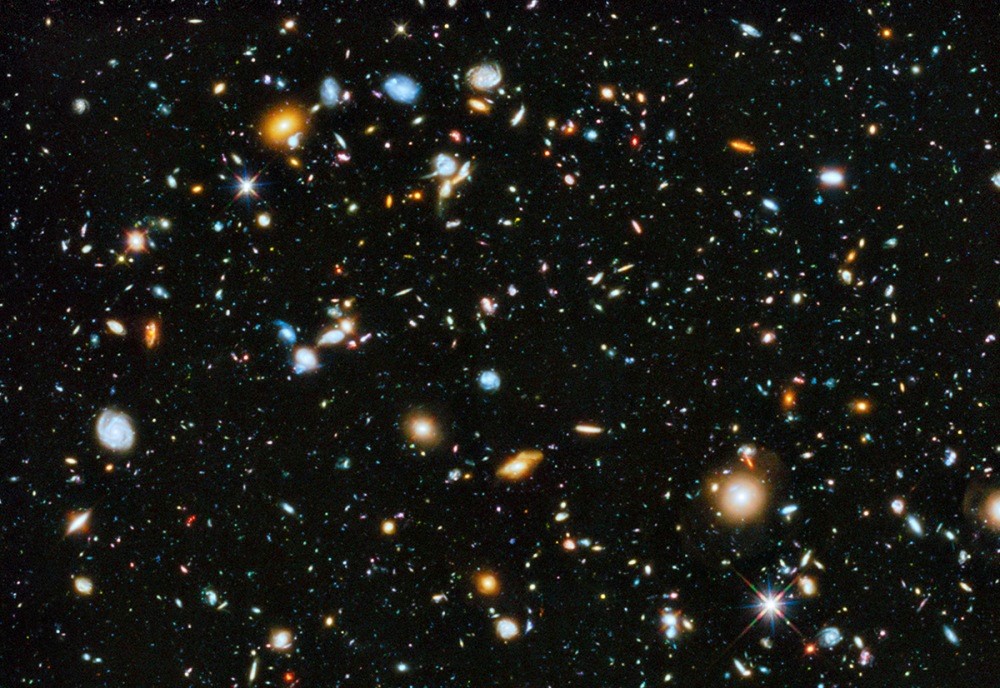




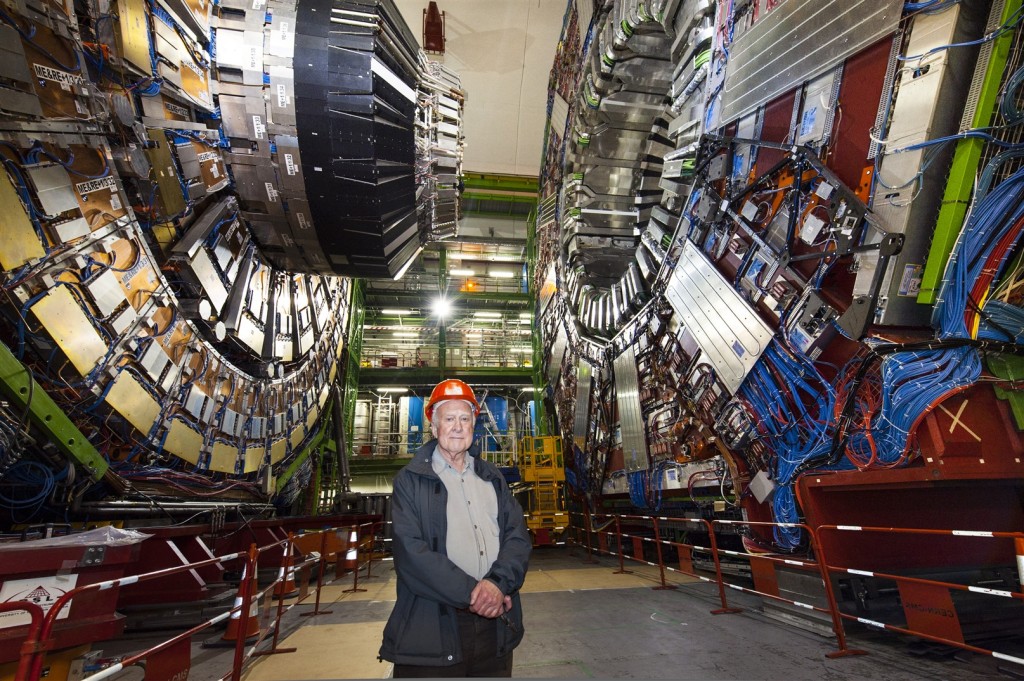
20 responses to “Starlight and time: Is it a brick wall for biblical creation?”
[…] “Starlight and time: Is it a brick wall for biblical creation?” http://johnhartnett.org/2015/07/31/starlight-and-time-is-it-a-brick-wall-for-biblical-creation/ […]
LikeLike
John, I appreciate your stand on a young earth and that starlight isn’t a problem for creation. But I am sorry to say that by your promoting of Humphreys’ model. His model actually implies that the universe is billions of years old and God created over billions of years. Lisle’s model is even worse as it compromises scripture. To learn more about why this is so, please consider watching my presentation “What About Distant Starlight?”: https://www.youtube.com/watch?v=6PmD9T2bCHQ
God Bless,
Joshua
LikeLike
Joshua, I briefly watched your video and listened especially to what you said in relation to Jason Lisle’s ASC model. Firstly, Lisle has only one model. The 1-way speed of light and the time zone ‘theories,’ as you call them, are essentially the same thing. The ASC is only a convention, not a model. Later Jason developed a model including the ASC. But your ‘refutation’ comparing it to scripture is flawed, because you implicitly assume ESC; you assume that it is the timing convention of the Author of the Genesis account. I will later watch your presentation in detail and give you a full critique. In the meantime I recommend you read THE ANISOTROPIC SYNCHRONY CONVENTION MODEL AS A SOLUTION TO THE CREATIONIST STARLIGHT-TRAVEL-TIME PROBLEM — PART I and THE ANISOTROPIC SYNCHRONY CONVENTION MODEL AS A SOLUTION TO THE CREATIONIST STARLIGHT-TRAVEL-TIME PROBLEM — PART II and HOW DO WE SEE DISTANT GALAXIES IN A 6000 YEAR OLD UNIVERSE?
LikeLike
I still believe time dilation, gravity or velocity, might be the answer, but I also like ASC. Although I’m not sure about the stars being created in a fashion so their light coordinates on Day 4. When I read Genesis, on Day 1, I get the sense that the only thing in existence is the unformed Earth and deep core, waters only, i.e. no stars with their light on the way in the distant universe. And on Day 2, the only Day without the mention of “good,” it appears God separates the rest of the waters from Day 1, from the Earth’s waters. These waters, could they be the entire universe, not just part of the solar system? Could the universe initially be waters only, which then transformed at God’s command into stars, planets, etc., and therefore Day 4 is called “good,” because the universe is now complete, unlike Day 2. The expanse, called heavens, was created on Day 2, below was the Earth, above the rest of the heavens. If that is the case then it seems to me stars couldn’t exist before Day 4, since they were only in water form.
LikeLike
Steve, In what you write, you have implicitly assumed the ESC timing convention. That is, you are imposing that convention on the meaning of the scriptures and then reasoning from that position. You use the word ‘initially’ imposing the ESC meaning, as if it is some absolute standard, but it is not. In fact, all humans before the knowledge of a finite speed of light (the 2-way measured speed) implicitly assumed that events occurred simultaneously with when they were observed.
LikeLike
So would time dilation actually being forcing God to conform to an ESC convention, in a sense? Considering this “problem” only arose for us recently.
LikeLike
Not really. Some time dilation might also be required in an ASC view of the Universe. If structures existed that take more than 6000 years to grow, i.e. supernova remnants then one might need to appeal to time dilation to explain it. See SUPERNOVA REMNANTS AND THE AGE OF THE UNIVERSE. But we only began searching for an explanation of a problem that only appeared once the ESC was assumed.
LikeLike
I am a relativity novice of note, so apologies in advance if this question is ridiculous, but I was pondering the “measuring of one way speed of light” conundrum as illustrated by the clocks and mirrors. While it would still not be possible to measure the one-way speed of light, I was wondering if a valid test of the ASC convention would be the following:
1. Light sent from clock (1) to a clock/mirror combination (2)
2. Mirror at (2) returns light and clock (2) simultaneously sends a new beam of light back to (1)
3. While beam 2’s one-way speed cannot be measured, it should arrive at clock (1) faster than the original reflected beam 1 and therefore confirm the ASC as valid (if I have understood the convention, of which there is no guarantee).
Was wondering about this after reading a RationalWiki which proposed that ASC was not falsifiable. Would this work, or have I so little understanding of relativity that i have missed something?
God bless
Michael
LikeLike
The RationalWiki article is correct. ASC is merely a choice of timing convention. It is meaningless to talk about whether it is the correct convention or not. But measuring the 1-way speed is not possible. It does not have any real physical meaning. Your experiment solves nothing because it is the same as using one light signal to trigger the second return signal and all you can measure is the delay between the sending the outgoing signal and the receiving of the returned light signal. It is a 2-way measurement.
LikeLike
Thank you for your reply Dr Hartnett. I am trying hard to understand all this, and hope you could help me with my understanding of time dilation and the so-called “twin paradox” with regards to starlight and time. I suspect that you have already covered this in your time dilation cosmology, but for me it helps to try and verbalise what I am thinking as it aids mental digestion. As I understand it, if one were to travel at say 0,8c a distance of 4 lightyears from the earth then from the earth’s reference frame this journey would have taken 5 earth-years, but from the traveller’s reference frame the journey would have taken 3 earth-years. Does this mean that if the journey were reversed and a traveler left the star at 0,8c the journey to earth for the traveler based on t=0 from the earth’s reference frame would be 3 earth-years, even though the star is 4 lightyears from earth? Is this what you mean when you talk about “fast” and “slow” ticking based on an earth reference frame? Sorry if this is a confusing description of my thought processes, but this is not exactly kindergarten stuff here (at least for me).
LikeLike
Michael, You are mixing up the concept of time dilation in Special Relativity, which is in space-time, with the concept I proposed occurred at Creation, which was in space-time-velocity. In Special Relativity time dilation occurs pretty much as you described; the famous “twin paradox” illustrates that. The idea I proposed is similar but not the same. It is not based on the same theory. It is different and the time dilation mechanism is also different.
LikeLike
How the world and the universe can be built on laws; and still be young according to the Lords own words in scripture, can’t be known. It is hard for educated man to see himself as such that any knowledge is beyond his eventual grasp; or, “too deep for him.” At our very best we are not equipped intellectually to match wits with God, nor to re-engineer his oeuvre in the manner we do amongst just us. His questions to Job haven’t been answered, though science has discovered many, many, related facts and causes. “Do you know where the storehouse of the snow is? The wind? The foundations of the world?” We know so much, but we can never discover how little that amounts to.
It remains to place anything we do in life at the service of God and neighbor.
LikeLike
What the Scriptures say should be read as the author intended. When it is narrative history as history not poetry, but when written as poetry, as in the Psalms, as poetry. I agree that we will never know all how God created (Ecclesiastes 3:11) but I do not agree that we, in principle, cannot gain some understanding through our efforts. Though it may be only like looking ‘through a glass darkly’.
LikeLike
Just a couple of quick questions, do you know when the video of the August 1st seminar will be available? And how much will it cost?
LikeLike
I hope they will be up on YouTube by the end of August. They will be freely available, though it is possible that CMI may make some into DVD at better resolution.
LikeLike
There is something appealing about the idea that we are seeing the stars in real-time, but the evidence from astronomy is that the universe looks old. If it were only 6000 years old, then God must have created galaxies in the process of colliding, and various types of stars at various stages in their life cycles, because these processes take millions and billions of years. He must also have created some of these stars, as well as binary systems, at the point of collapse to generate supernova, and some that have collapsed into stellar black holes. Rather than creating a “mature” universe, he must have created an aged and decaying universe, a state more properly associated with the Fall than the Creation. You quite rightly rule out the light-created-in-transit idea on the grounds that God is not deceptive. Logically, therefore, you should also rule out the young-universe ideas for the same reason, i.e., that he would not create a young universe that looks old.
LikeLiked by 1 person
How do Einsteins’s theory of relativity and special relativity exactly work with the timing convention? Are they for or against them?
LikeLike
Neither. They are conventions so a choice. Einstein chose the Einstein Synchrony Convention when formulating Special Relativity hence constant isotropic 2-way speed of light. But you can construct your relativity with ASC too. It is also valid. There is no right or wrong convention just like there is no right or wrong time zone.
LikeLike
Quick question.
If stars are redshifted because they are moving away from us then does than mean that is a beam of light left Earth and a distant star at the same instant, wouldn’t the light from the star reach Earth before the light from the Earth reach the star? I liken this to a ball being thrown from a car or towards a moving vehicle (away from the observer). Assuming enough force was applied to the ball, which direction would the ball complete first? To what extent would this impact distance calculations?
LikeLike
Michael, No it is not as you would imagine with your ball example. The reason the theory is call relativity is because it is totally reciprocal. Each would see redshifted light from the other. When you use the expression “at the same instant” you must assume something about clocks, simultaneity and sending light signals. To say one signal arrives before another at a different location depends on simultaneity, and is observer dependent. Standard relativity uses ESC and each observer may observe a different sequence of events.
LikeLike